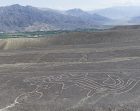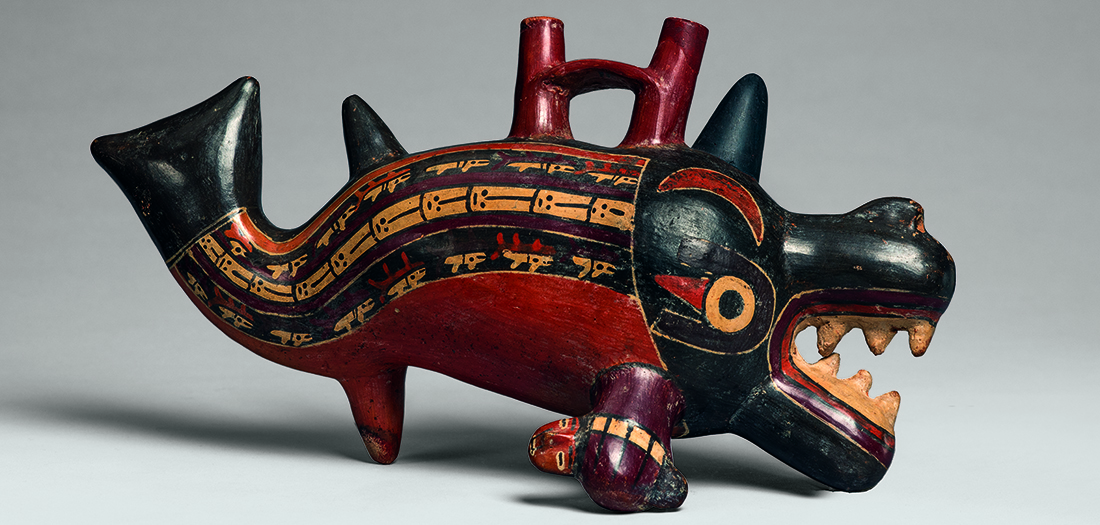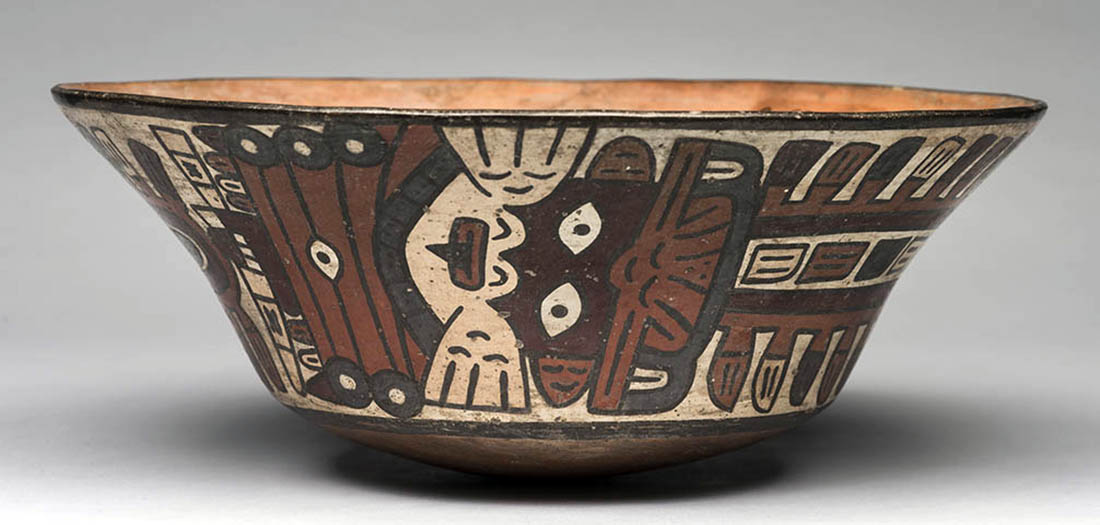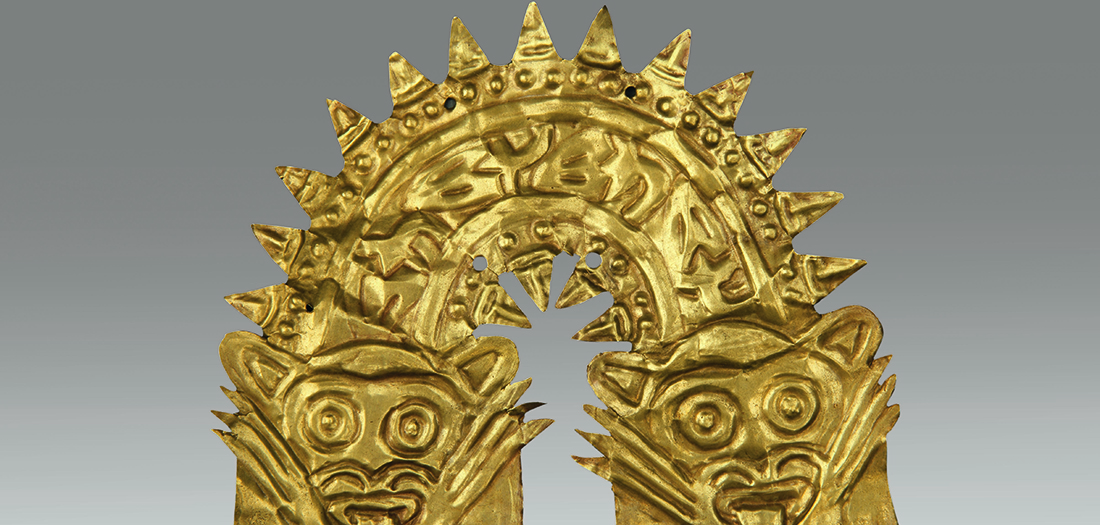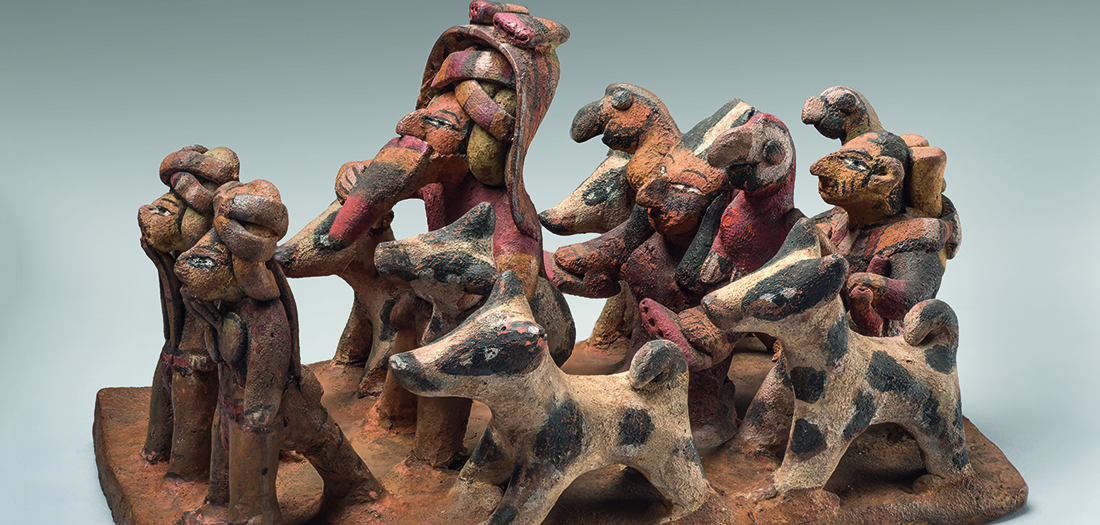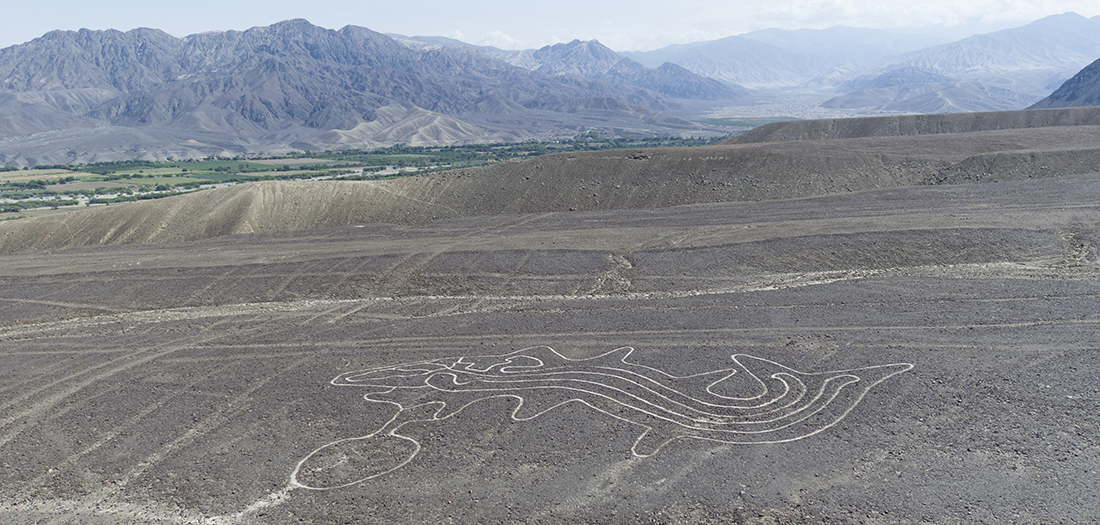
This exhibition tells the story of the people who populated the basin of Rio Grande de Nasca two thousand years ago. We present a tour of one of the most fascinating and enigmatic cultures of ancient Peru through pieces of great significance and digital resources of an informative nature.
This exhibition tells the story of the people who populated the basin of Rio Grande de Nasca two thousand years ago. We present a tour of one of the most fascinating and enigmatic cultures of ancient Peru through pieces of great significance and digital resources of an informative nature.
On the arid southern coast of Peru, between approximately 200 BC and 650 AD, Nasca, one of the most fascinating and enigmatic pre-Columbian Andean cultures, thrived. Since its discovery in the early 20th century, Nasca people have amazed the world with their striking pottery and fine textiles, as well as their geoglyphs, huge drawings etched across the pampas, whose nature and function have been the subject of great debate.
From a representative selection of pottery, textiles and metal objects, displayed together with contextual materials, this exhibition tells the story of the people who populated the basin of Rio Grande de Nasca two thousand years ago.
The Espacio Fundación Telefónica is hosting the Nasca exhibition. Looking for Footprints in the Desert, organised by the Lima Art Museum (MALI) and the Museum Rietberg Zurich in cooperation with the Bundeskunsthalle in Bonn and Fundación Telefónica. In scientific cooperation with the German Archaeological Institute and the Swiss-Liechtenstein Foundation for Archaeological Research Abroad (SLSA).
Organised by Cecilia Pardo, Deputy Director of the Mali Museum and the curator of Museum Rietberg Peter Fux, the exhibition provides a unique opportunity to learn about the nature and significance of this enigmatic culture through pieces of great significance. It also offers a series of technological tools (mapping, virtual reality, animations, etc.) that allow the viewer to have a new experience thanks to a museum that emphasises dissemination through digital resources.
The exhibition space is structured around five themes:
Life and Valley
The Nasca depicted images inspired by their environment not only as a celebration of nature, but also to symbolise supernatural forces which, according to their beliefs – affected the lives of humans. For example, ceramics present motifs of birds, marine life, fruit, scenes of agriculture and fishing, but also hybrid beings, supernatural characters that belong to another world. In this section you will find mostly ceramics. Thanks to these discoveries, today we know that Nasca’s ceramics were not restricted to the elite, but were accessible to various layers of society.
Cahuachi
On the left bank of the Nasca river, there was the most important centre of the Nasca society in its early phase (50-300 AD). From there, the distribution of water obtained from the filter galleries was controlled, and there is evidence that from there roads started that led towards the ceremonial area of the geoglyphs. Also, its location between the Andes and the Pacific Ocean allowed them to play a strategic role in the relations of the mountain and coastal communities. It is believed Cahuachi’s reached its zenith around 400 AD, possibly because of two floods and a massive earthquake, drastic changes that resulted in a reorganisation of their society.
Mythology and Rituals
The natural images of Nasca art coexist with motifs of a supernatural appearance that make reference to a particular belief system. The various depictions of a mythical anthropomorphic being, battles, headhunting, the ancestors and snakelike appendices are some of the images which illustrate the myths and rituals that are materialised in ceramics and fine fabrics with the goal of perpetuating them, invoking divine power, and thus ensuring human survival on Earth.
The Sacred landscape
The Nasca and Palpa’s pampas are one of the driest places on the planet, a territory defined by a mountain chain that acts as a barrier and prevents the passage of materials that descend down the rivers from the Andes. Small stones and sediments accumulated there for thousands of years to form kilometres of pampas, which were used draw the famous geoglyphs. Evidence of human activity such as ceramics, offerings and remains of possible roofs were found in this place, revealing a living space where the inhabitants went to worship their gods.
How were the geoglyphs made?
On an area of more than 500 km2, ancient Nasca residents transformed a rocky ground in a ritual space demarcated by thousands of lines and figures. These marks on the land are known today as geoglyphs, which means “engraved on the land”.
The geoglyphs are formed mainly through colour contrast, which occurs due to the geological composition of the pampas. The wind gradually cleared surface sand, leaving a thick layer of small stones, which acquired a darker tone due to oxidation processes. To make a geoglyph, it sufficed to remove this layer by manually extracting stones and exposing the clear and sandy sediment that was below.
Programme of workshops and parallel activities
- The Nasca exhibition. “Looking for Footprints in the Desert” is accompanied by a workshop programme organised by our educational team. There are workshops for all ages and registration is free of charge. View all the details here.
- #NascaLinesEverywhere, the new Instagramers’ competition in which we invite you to search, create and share images inspired by these vestiges of the past, lines etched in our present-day landscape that influence, shape and transform our view of daily life.

